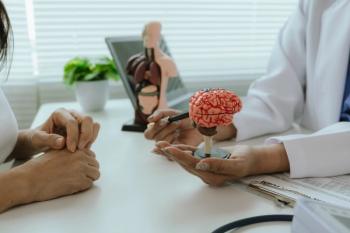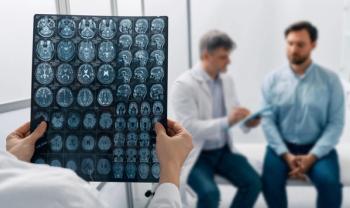
- Drug Topics June 2021
- Volume 165
- Issue 6
Migraine Care: Prevention, Treatment, and Medication Management
Migraines can be disabling for those affected, but various pharmacologic and nonpharmacologic therapies are available.
Twelve percent of the US population experiences migraine, according to the Migraine Research Foundation. Migraine is the third most prevalent illness globally, and it affects 1 out of 4 US households. Moreover, migraine can be disabling, with 90% of those affected worldwide unable to work or function normally during a migraine attack.1
Migraine Phases and Symptoms
Although migraine is sometimes thought of as just a headache, a migraine attack can involve 4 phases of various symptoms. Not every stage is present in every migraine. Pharmacists can counsel patients to keep track of their migraines with a headache journal or app because neurologists and headache specialists may be able to pinpoint patterns and detect a migraine attack before it arrives.2
A migraine attack can manifest with any of the 4 phases:
- Prodrome: This is a “preheadache” and can last several hours to several days. Symptoms include mood changes (eg, depression, irritability), sensitivity to light and sound, insomnia or fatigue, and stomach problems (eg, nausea, vomiting, diarrhea). Unique symptoms include yawning, food cravings, and increased urination.
- Aura: This phase can last from 5 to 60 minutes. Symptoms include vision disturbances, such as blurry vision or vision loss, and/or seeing patterns or flashing or shimmering lights.
- Headache: This phase can last from 4 to 72 hours. The hallmark symptom is pain, often on one side or one part of the head. Other symptoms like nausea, vomiting, anxiety, and sensitivity to light and sound may occur.
- Postdrome: This “hangover” phase usually lasts 24 to 48 hours. Symptoms may include fatigue, body pain, dizziness, and mood changes.2
One way to remember migraine symptoms is with the acronym POUND3:
P: pulsating pain
O: 1-day duration of severe untreated attacks
U: unilateral pain
N: nausea and vomiting
D: disabling intensity
When to Consult a Specialist
It is prudent to refer patients who have frequent headaches, headaches that are increasing in severity or frequency, or headaches that interfere with functioning to a headache specialist for evaluation and a treatment plan, including preventive and acute treatment.4
If the patient experiences a new or unusual symptom, such as a headache that occurs within a few seconds or the worst headache they’ve ever had, refer the patient to the emergency department. Other symptoms that require emergency treatment include pain for more than 72 hours, fever, weakness, vision loss or changes, and confusion or if the patient is pregnant, is immunocompromised, or has a severe medical condition like liver or kidney disease.4,5
Migraine Prevention
Nonpharmacological prevention of migraine
Some nonpharmacological migraine prevention tips for patients include6,7:
- Tracking: Keep detailed information in a headache diary or app.
- Trigger avoidance: Avoid known triggers such as odors, smoke, alcohol, stress, and food triggers.
- Sleep: Keep a regular sleep schedule by waking up and going to bed at the same times every day, including weekends.
- Diet: Eat regular, healthy meals and limit sugar. Drink plenty of water to avoid dehydration. Limit alcohol and caffeine. Avoid food triggers such as aged cheeses, chocolate, MSG, and cured meats.
- Exercise: Try to get moderate, regular exercise 3 to 5 times weekly.
- Reduce stress: Lower stress with relaxation, yoga, or stress management.
Pharmacological prevention of migraine
Patients who have 4 or more migraine attacks, 8 or more migraine days per month, or other qualifying factors may need preventive treatment.7 Many options are available, and some of the more common preventive treatment medications include the following7:
β-Blockers (propranolol or metoprolol)
- Counsel patients on adverse effects (AEs) such as fatigue, depression, sexual problems, decreased heart rate, and low blood pressure.
Anticonvulsants (divalproex or topiramate)
- Divalproex: Counsel on nausea, vomiting, fatigue, and lab monitoring due to possibility of liver or pancreas problems.
- Topiramate: Counsel on paresthesia, stomach pain, fatigue, memory problems, kidney stones, nausea, vomiting, altered taste, weight loss, eye pain, and lab monitoring due to possibility of liver problems and metabolic acidosis.
Antidepressants (such as amitriptyline or venlafaxine)
- Counsel patients on the risk of suicidal thoughts and behavior and the importance of tapering when discontinuing medication.
- Amitriptyline: Counsel on anticholinergic AEs such as dry mouth, blurry vision, constipation, urinary retention, and weight gain.
CGRP inhibitors
Calcitonin gene-related peptide (CGRP) inhibitors are a newer class of drugs that prevent migraine by targeting CGRP, which is found in higher levels during a migraine attack. CGRP inhibitors are monoclonal antibodies that block the effects of CGRP and are the first class of medications specifically designed to prevent migraine.
CGRP inhibitors approved by the FDA for the prevention of migraine are as follows8-12:
- Erenumab-aooe (Aimovig; Amgen): 70 to 140 mg injected subcutaneously once monthly
- Fremanezumab-vfrm (Ajovy; Teva Pharmaceutical Industries Ltd): 225 mg injected subcutaneously once monthly or 675 mg injected every 3 months (as 3 consecutive injections of 225 mg each)
- Galcanezumab-gnlm (Emgality; Eli Lilly and Company): 240 mg (2 consecutive doses of 120 mg) injected subcutaneously as a loading dose, then 120 mg once monthly
- Eptinezumab-jjmr (Vyepti; Lundbeck Seattle BioPharmaceuticals, Inc): 100 mg or 300 mg by intravenous infusion every 3 months
Common AEs associated with CGRP inhibitors include injection-site reactions (pain, redness, itching) and hypersensitivity reactions.9-12 Other AEs of erenumab-aooe include constipation (possibly with complications including hospitalization) and increased blood pressure.9 Eptinezumab-jjmr may also cause nasopharyngitis.13
Migraine Treatment
Many options are available for migraine treatment. Product selection may be based on a variety of factors, including symptoms, medical history, other medications, patient preference for specific formulation(s), AEs, and cost or insurance considerations (TABLE).14
Pharmacists can provide counseling on the following popular first-line medications for migraine treatment.
OTC options
For mild to moderate migraine attacks, acetaminophen and oral nonsteroidal anti-inflammatory drugs (NSAIDs) such as aspirin, diclofenac, ibuprofen, or naproxen may be used. Although acetaminophen is less effective than NSAIDs for migraine, it has fewer AEs. The combination in acetaminophen/aspirin/caffeine (Excedrin; Novartis) is also a first-line option.14
Counseling can include dosage, limitations, and the importance of avoiding alcohol. For NSAIDs and acetaminophen/aspirin/caffeine, also counsel patients on the risk of potential gastrointestinal and cardiovascular effects.15
Triptans
Triptans are effective as a first-line treatment for moderate to severe migraine. Triptans approved by the FDA for the treatment of migraine include the following14:
- Naratriptan (Amerge; GlaxoSmithKline)
- Almotriptan (Axert; Teva Pharmaceutical Industries Ltd)
- Frovatriptan (Frova; Vernalis)
- Sumatriptan (Imitrex; GlaxoSmithKline)
- Rizatriptan (Maxalt; Merck)
- Eletriptan HBr (Relpax; Pfizer Inc)
- Zolmitriptan (Zomig; AstraZeneca)
Triptans have slight differences that may cause patients to respond to certain triptans but not others. Triptans are most effective when taken early in a migraine attack and are generally well tolerated. Most triptans, with the exception of almotriptan and frovatriptan, can cause fatigue, dizziness, chest pain, and nausea.14
Recommendation
Do not use opioids or butalbital for migraine except as a last resort.
Do not prescribe opioid or butalbital-containing medications as first-line treatment for recurrent headache disorders.
Do not recommend prolonged or frequent use of OTC pain medications for headache.
Organization
American Academy of Neurology
American Headache Society
American Headache Society
Other new drugs have entered the market for migraine prevention and/or treatment.
- Rimegepant (
Nurtec ODT ; Biohaven) is an orally disintegrating tablet indicated for both the treatment and prevention of migraine. The main AEs are nausea and abdominal pain. - Ubrogepant (
Ubrelvy ; Allergan) is indicated for acute treatment of migraine. The most common AEs are nausea and somnolence.
Lasmiditan (Reyvow ; Eli Lilly and Company) is indicated for acute treatment of migraine. The most common AEs are dizziness, fatigue, paresthesia, and sedation.
Medication-Overuse Headache
An important consideration when talking with patients is the possibility of medication-overuse headache, also known as a rebound headache—part of a vicious cycle of having headaches and taking more and more medication to relieve them, which results in near-daily or daily headaches.16
Patients who experience headaches every day, or almost every day, especially when the pain begins upon awakening, may be experiencing a medication-overuse headache. Refer the patient to a headache specialist, who can help the patient establish a new treatment plan that includes stopping acute medications, starting preventive treatment, and slowly reintroducing a limited amount of acute medicines as needed.16
Drug Interactions and Serotonin Syndrome
An essential consideration in either preventive or acute treatment is the presence of drug interactions. Pharmacists can help patients by checking for drug interactions and being especially aware of the possibility of serotonin syndrome, a life-threatening condition that is more likely to occur with triptans and other medications that increase serotonin levels.
References
- Migraine facts. Migraine Research Foundation. Accessed April 12, 2021.
https://migraineresearchfoundation.org/about-migraine/migraine-facts/ - The timeline of a migraine attack. American Migraine Foundation. January 18, 2018. Accessed April 12, 2021.
https://americanmigrainefoundation.org/resource-library/timeline-migraine-attack/ . - When headaches are more than a pain. Harvard Health Publishing. March 2019. Accessed April 15, 2021.
https://www.health.harvard.edu/pain/when-headaches-are-more-than-a-pain - Know your headaches. Cedars-Sinai blog. February 8, 2018. Accessed April 12, 2021.
https://www.cedars-sinai.org/blog/know-your-headaches.html - When to go to the emergency room for a headache or migraine. American Migraine Foundation. February 13, 2017. Accessed April 12, 2021.
https://americanmigrainefoundation.org/resource-library/when-to-go-to-the-er-for-headache-migraine/ - Trigger avoidance information. American Headache Society. Accessed April 12, 2021.
https://americanheadachesociety.org/trigger-avoidance-information/ - Ha H, Gonzalez A. Migraine headache prophylaxis. Am Fam Physician. 2019;99(1):17-24. Accessed April 27, 2021.
https://www.aafp.org/afp/2019/0101/p17.html - Mohanty D, Lippmann S. CGRP inhibitors for migraine. Innov Clin Neurosci. 2020;17(4-6):39-40. Accessed April 27, 2021.
https://www.ncbi.nlm.nih.gov/pmc/articles/PMC7413335/ - New drug class employs novel mechanism for migraine treatment and prevention. FDA. Updated January 29, 2019. Accessed April 14, 2021.
https://www.fda.gov/drugs/news-events-human-drugs/new-drug-class-employs-novel-mechanism-migraine-treatment-and-prevention - Aimovig- erenumab-aooe injection. DailyMed. Updated February 11, 2021. Accessed April 14, 2021.
https://dailymed.nlm.nih.gov/dailymed/drugInfo.cfm?setid=b998ed05-94b0-47fd-b28f-cddd1e128fd8 - Ajovy- fremanezumab-vfrm injection. DailyMed. Updated October 27, 2020. Accessed April 14, 2021.
https://dailymed.nlm.nih.gov/dailymed/drugInfo.cfm?setid=98e344ea-5916-4947-b6f2-4a76ccc04b6b - Emgality- galcanezumab-gnlm injection, solution. DailyMed. Updated September 28, 2020. Accessed April 14, 2021.
https://dailymed.nlm.nih.gov/dailymed/drugInfo.cfm?setid=33a147be-233a-40e8-a55e-e40936e28db0 - Vyepti- eptinezumab-jjmr injection. DailyMed. Updated February 21, 2020. Accessed April 14, 2021.
https://dailymed.nlm.nih.gov/dailymed/drugInfo.cfm?setid=79065861-6aa5-4d1f-829f-3a6471286b36 - Mayans L, Walling A. Acute migraine headache: treatment strategies. Am Fam Physician. 2018;97(4):243-251. Accessed April 27, 2021.
https://www.aafp.org/afp/2018/0215/p243.html - Ghlichloo I, Gerriets V. Nonsteroidal anti-inflammatory drugs (NSAIDs). In: StatPearls (Internet).StatPearls Publishing; 2021. Accessed April 14, 2021.
https://www.ncbi.nlm.nih.gov/books/NBK547742/ - Medication overuse headaches. Cleveland Clinic. Updated December 18, 2020. Accessed April 14, 2021.
https://my.clevelandclinic.org/health/diseases/6170-medication-overuse-headaches
Articles in this issue
over 4 years ago
Pharmacists Can Help Patients as Signs of Normalcy Returnover 4 years ago
New Nonstimulant Medication Is Approved for ADHD in Childrenover 4 years ago
Social Media Incites the COVID-19 Misinformation Epidemicover 4 years ago
A Guide to HIPAA Compliance in the Pharmacyover 4 years ago
Preventing Autoimmune Disease Flare-ups During the Summerover 4 years ago
Enhancing Medication Adherence With Smart PackagingNewsletter
Pharmacy practice is always changing. Stay ahead of the curve with the Drug Topics newsletter and get the latest drug information, industry trends, and patient care tips.















































































































